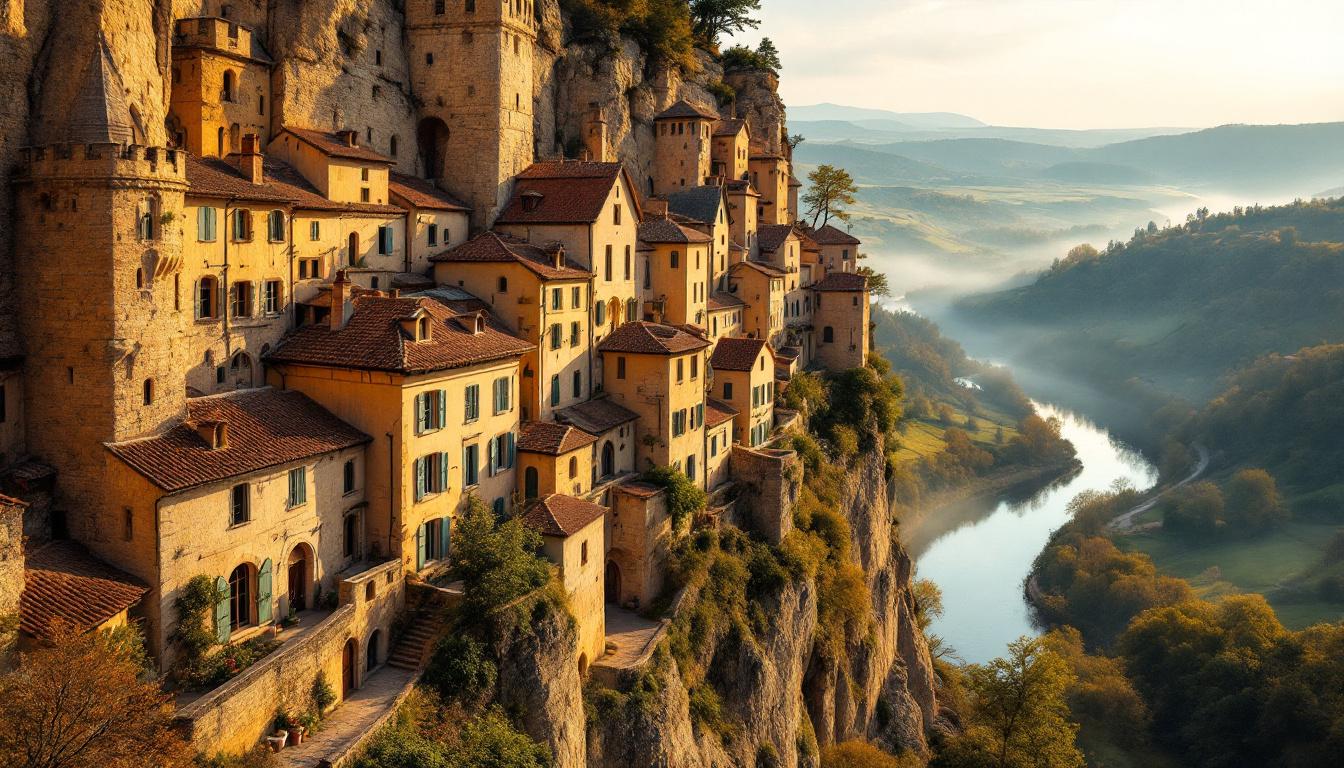In the heart of France’s Lot Valley, Saint-Cirq-Lapopie clings to a dramatic cliff 100 meters above the winding river below. This medieval village of just 204 residents has become the battleground for a quiet cultural war that most travelers never witness.
The locals here don’t speak openly about their Instagram problem. They won’t tell you how they’ve watched their ancient cobbled streets transform into selfie stations, or how they’ve had to develop what they diplomatically call a “battle plan” to manage the 600,000 annual visitors who descend upon their home.
What they will tell you, if you ask the right questions in the right way, is how they’re fighting to preserve something precious that social media threatens to destroy forever.
Why this medieval jewel guards its secrets so fiercely
The pedestrian-only protection strategy
Walk through Saint-Cirq-Lapopie’s narrow medieval streets and you’ll notice something remarkable: no cars penetrate the historic core. The locals didn’t implement this pedestrianization policy for tourists—they did it to preserve the 13th to 15th-century architecture that Instagram users love to photograph but rarely understand.
Artisan workshops fighting digital disruption
In the same stone buildings where medieval craftsmen once worked, today’s artisans continue traditional woodworking and pottery. These working ateliers represent authentic cultural continuity that locals fear will be lost if their village becomes just another photogenic backdrop for social media content.
The cultural preservation battle most visitors never see
André Breton’s surrealist legacy under threat
The village’s connection to surrealist leader André Breton, who declared he “stopped wanting to be elsewhere” after visiting, created an artistic sanctuary that locals believe is incompatible with mass digital tourism. The International Center for Surrealism and World Citizenship represents their attempt to maintain intellectual depth over Instagram superficiality.
Community consensus on sustainable limits
Local residents have quietly agreed that their village’s ethereal charm—the quality that made it France’s favorite village in 2012—requires protection from viral social media exposure. They’ve seen what happened to other picturesque destinations that became Instagram famous overnight.
How 204 residents manage 600,000 annual visitors
The morning visit tradition
Locals encourage visitors to arrive early morning, before the tour buses and Instagram photographers arrive. This isn’t just about crowds—it’s about experiencing the village as residents do, when morning light illuminates the medieval stones and the Lot River valley spreads peacefully below.
Supporting authentic economy over tourist traps
The village’s 13 official Historical Monuments remain integrated into daily life rather than converted into tourist attractions. Residents deliberately maintain this authentic integration, hoping visitors will appreciate cultural depth over photogenic surfaces.
The delicate balance between welcome and preservation
Why locals prefer cultural pilgrims over viral visitors
Residents distinguish between travelers seeking cultural understanding and those hunting Instagram content. They welcome visitors who appreciate that this cliff-perched village represents living medieval heritage, not just a scenic backdrop for social media posts.
The protection strategies working behind the scenes
From limiting commercial development to maintaining narrow street access that naturally controls crowd flow, locals have implemented subtle barriers that preserve village character. These protective measures work precisely because they remain largely invisible to casual visitors focused on capturing the perfect shot.
Saint-Cirq-Lapopie’s residents understand something profound about modern travel: authentic cultural experiences cannot survive unlimited digital exposure. Their quiet resistance to Instagram fame represents a broader struggle between cultural preservation and viral tourism that defines travel in our social media age.
If you visit this remarkable village, consider arriving with respect rather than cameras first. The locals don’t want to appear on your Instagram feed—they want you to understand why places like theirs matter beyond their photogenic appeal, and why some of France’s most beautiful secrets deserve protection from the very attention that threatens to destroy them.
Essential visitor information
When do locals recommend visiting?
Early morning visits during shoulder seasons (May-June, September-October) allow authentic cultural engagement while respecting community wishes for sustainable tourism levels.
How can visitors support local preservation efforts?
Purchase from authentic artisan workshops, avoid peak summer crowds, and choose cultural understanding over social media documentation as your primary travel motivation.
What makes this different from other French medieval villages?
The combination of dramatic cliff setting, active artisan community, and residents’ deliberate choice to prioritize cultural authenticity over tourist revenue creates an increasingly rare authentic medieval experience.
